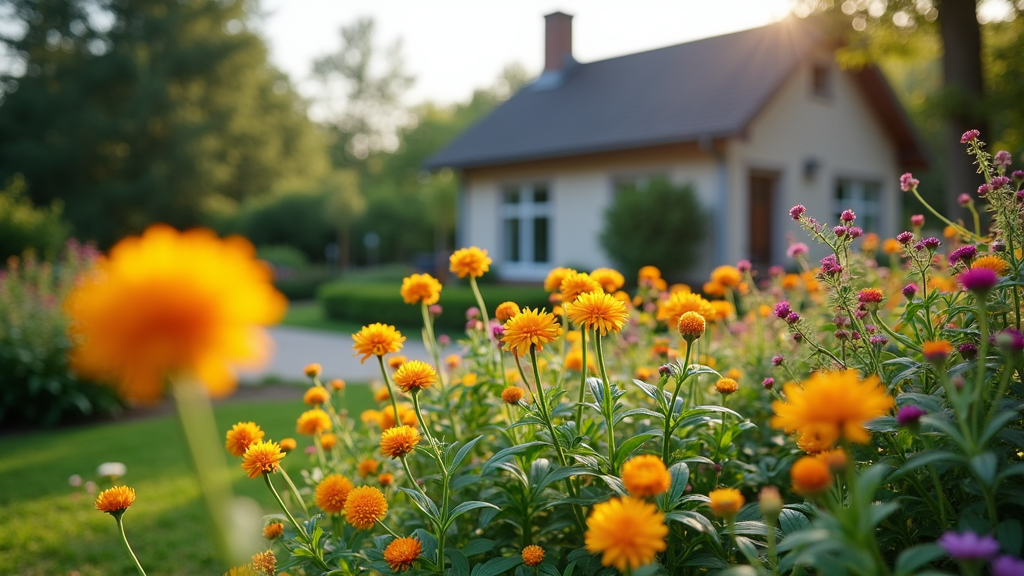Introduction
In recent years, the conversation surrounding sustainable practices has reached a crescendo, and rightly so. As more people become aware of the detrimental effects of traditional lawn care on the environment, there's been a significant shift toward adopting sustainable landscape practices. Whether you're an avid gardener or just someone who enjoys a well-kept yard, understanding sustainable lawn care can lead to not only a beautiful outdoor space but also a healthier planet. This comprehensive guide— A Beginner’s Guide to Sustainable Landscape Practices in Lawn Care—will walk you through the essentials of eco-friendly lawn maintenance.
Sustainable Landscape Practices in Lawn Care
Sustainable landscape practices aim to minimize environmental impact while maximizing aesthetic appeal and functionality. These methods focus on using resources efficiently and promoting biodiversity. So, what does this actually mean for your lawn?
Why Choose Sustainable Lawn Care?
Choosing sustainable lawn care is not just about aesthetics; it’s about stewardship. Here are some compelling reasons:
Environmental Health: Reduces chemical runoff into waterways. Biodiversity: Supports native plant species and local wildlife. Resource Conservation: Uses water and energy more efficiently. Soil Health: Promotes nutrient-rich soil that fosters plant growth.The Basics of Sustainable Lawn Care
At its core, sustainable lawn care involves several key principles that you can easily implement at home.

1. Know Your Soil
Understanding your soil is crucial for successful lawn care. Soil tests can reveal pH levels and nutrient deficiencies, allowing you to https://www.ramirezlandl.com/contact tailor your approach accordingly.
How to Test Your Soil
- Purchase a soil test kit or send samples to a local extension service. Follow instructions carefully for accurate results.
2. Select Native Plants
Native plants are adapted to your local climate and require less water and maintenance.
Benefits of Native Plants
- Drought-resistant Require fewer pesticides Attract beneficial insects
3. Responsible Watering Practices
Over-watering is not just wasteful; it can lead to shallow root systems and fungal diseases.
How Much Water Does Your Lawn Need?
Most lawns require about 1 inch of water per week, including rainfall.
Watering Tips
- Water early in the morning. Use drip irrigation or soaker hoses for efficiency.
Composting: The Heart of Sustainable Lawn Care
Composting is one of the most rewarding practices you can adopt for sustainable landscaping. It turns organic waste into nutrient-rich fertilizer for your garden.
What Can You Compost?
You can compost various materials, including:
| Material Type | Examples | |------------------|----------------------------------| | Kitchen Scraps | Fruit peels, vegetable trimmings | | Yard Waste | Leaves, grass clippings | | Paper Products | Cardboard (non-glossy), newspapers |
How to Start Composting
Choose a compost bin or pile location. Layer green (nitrogen-rich) and brown (carbon-rich) materials. Turn the pile every few weeks for aeration.Natural Fertilization Techniques in Lawn Care
Chemical fertilizers might produce quick results but often harm the ecosystem long-term. Natural fertilization techniques are simple yet effective ways to nourish your garden sustainably.
Types of Natural Fertilizers
Organic Matter: Compost enriches soil structure. Manure: Provides nutrients without chemicals. Mulch: Retains moisture while suppressing weeds.When Should You Fertilize?
It's best to fertilize during the growing season—typically spring through early summer—when plants are actively absorbing nutrients.
Pest Management Through Integrated Pest Management (IPM)
Integrated Pest Management (IPM) focuses on long-term prevention rather than immediate eradication through chemicals.

Principles of IPM Include:
- Regular monitoring for pests Setting action thresholds Using biological control when possible
Examples of Biological Control Methods
- Beneficial insects like ladybugs Neem oil as an organic pesticide
Sustainable Mowing Practices
Believe it or not, how you mow can significantly affect your lawn's health!
Best Mowing Techniques
- Keep mower blades sharp for clean cuts. Mow at a height of 3 inches or more; taller grass retains moisture better.
Why Should You Mulch When Mowing?
Mulching returns valuable nutrients back into the soil by leaving grass clippings on the lawn after mowing.
Water Conservation Strategies in Lawn Care
Water scarcity is an ever-growing concern across many regions globally, making water conservation vital in lawn care practices.
How Can You Conserve Water?
Install rain barrels to collect runoff from gutters. Opt for drought-resistant turf varieties like fescue or zoysia grass.FAQs About Sustainable Landscape Practices in Lawn Care
1. What is sustainable landscaping?
Sustainable landscaping integrates environmentally friendly practices that enhance biodiversity while using resources responsibly.

2. Is organic lawn care more expensive than traditional methods?
While initial costs may be higher, long-term savings from reduced chemical use often balance out expenses over time.
3. How often should I mow my lawn?
It depends on growth rates—but generally once every week during peak growing seasons works well!
4. Can I use native plants in my current landscape?
Absolutely! Incorporating native plants can enhance beauty while requiring less upkeep compared to non-native species.
5. What should I do if I have pests invading my garden?
Start with IPM methods—monitor pest populations before taking action, and consider using natural predators first!
6. Are there specific tools needed for sustainable lawn care?
Basic gardening tools like hand trowels, compost bins, and mulch spreaders will suffice for starting out!
Conclusion
Adopting sustainable landscape practices in lawn care may seem daunting at first glance; however, with patience and guidance, it's entirely achievable! By incorporating these eco-friendly techniques into your routine—from selecting native plants to implementing responsible watering—you’ll not only create a stunning outdoor space but also contribute positively toward environmental conservation efforts!
As we navigate through this unprecedented time where ecological awareness is crucial, remember that every small step counts! Embrace sustainability today for greener tomorrows!
In summary, this guide aims not only to inform but inspire you— A Beginner’s Guide to Sustainable Landscape Practices in Lawn Care is more than just tips; it's about fostering a deeper connection with nature through mindful gardening choices!